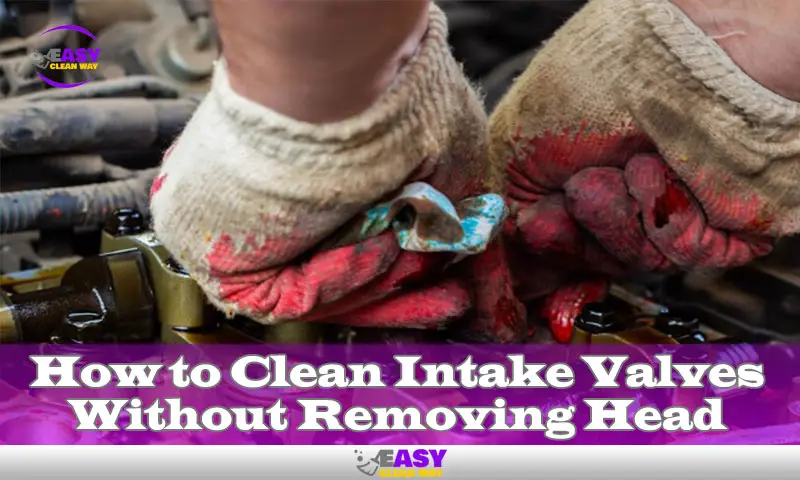To clean Jeep seats, vacuum any dirt and debris, then use a mild cleaner and soft brush to scrub the seats gently.
Understanding The Importance Of Regular Seat Cleaning For Jeeps
Maintaining the cleanliness of your Jeep seats is more than just a cosmetic concern. It plays a significant role in enhancing your overall driving experience and comfort. Regular seat cleaning not only helps keep your vehicle looking its best, but it also impacts the appearance and longevity of your seats.
In this section, we will delve into the importance of clean Jeep seats and how they contribute to your overall driving pleasure.
Why Clean Jeep Seats Matter For Overall Driving Experience And Comfort
Taking the time to clean your Jeep seats regularly can greatly enhance your driving experience and provide the much-needed comfort you deserve. Here are the key points to consider:
- Comfort and hygiene: Clean seats provide a more comfortable ride, ensuring you enjoy your journeys to the fullest. Removing dirt, grime, and odors from your seats creates a hygienic environment inside your Jeep, reducing the risk of unpleasant smells or even potential health hazards.
- Improved aesthetics: Clean seats make your Jeep look more appealing both inside and out. Regular cleaning helps prevent the buildup of dirt and stains, keeping your seats looking fresh, vibrant, and in top condition.
- Longevity and resale value: Regular cleaning and maintenance can significantly extend the lifespan of your Jeep seats. By removing dirt, dust, and spills promptly, you prevent these particles from embedding deep within the fabric or leather, which can cause premature wear and tear. Proper seat care can also boost the resale value of your Jeep, as well-kept seats are a desirable feature for potential buyers.
- Enhanced air quality: Maintaining clean seats contributes to the overall air quality inside your vehicle. Removing dust and debris reduces the amount of airborne particles and allergens, providing a healthier environment for you and your passengers.
Impact Of Dirt, Dust, And Spills On Seat Appearance And Longevity
It’s essential to understand the consequences that dirt, dust, and spills can have on the appearance and longevity of your Jeep seats. Here are the key points to keep in mind:
- Stain formation: Accidental spills or even everyday remnants such as food crumbs and liquid stains can quickly ruin the appearance of your seats. These stains may become embedded within the fabric or leather, making them difficult to remove without professional cleaning.
- Fading and discoloration: Exposure to sunlight and UV rays can cause your Jeep seats to fade and discolor over time. Regular cleaning helps minimize the impact of UV rays, prolonging the vibrancy and appearance of your seats.
- Wear and tear: The continuous accumulation of dirt, dust, and debris on your seats can cause premature wear and tear. Abrasive particles can grind against the seat material, leading to fabric or leather damage and compromising the overall lifespan of your seats.
- Odor buildup: Neglected spills and trapped moisture can result in unpleasant odors inside your Jeep. Proper cleaning methods help eliminate these odors, ensuring a fresh and inviting interior environment.
Remember, taking care of your Jeep seats goes beyond aesthetics. By understanding the importance of regular seat cleaning, you can ensure enhanced comfort, longevity, and an overall pleasant driving experience.
Choosing The Right Cleaning Products And Equipment

When it comes to cleaning your Jeep seats, selecting the right cleaning products and equipment is crucial to achieving effective results. With numerous options available on the market, it’s important to consider the specific needs of your Jeep’s upholstery. Here, we explore different types of cleaning products suitable for Jeep upholstery and recommend cleaning equipment for effective seat cleaning.
Exploring Different Types Of Cleaning Products Suitable For Jeep Upholstery
Cleaning products play a vital role in maintaining the cleanliness and appearance of your Jeep seats. Consider the following options for effective cleaning:
- Fabric cleaners: Specifically designed for fabric upholstery, these cleaners are formulated to remove dirt, stains, and spills. They are available in spray or foam form.
- Leather cleaners: If your Jeep seats are made of leather, it’s important to choose a cleaner specifically formulated for leather upholstery. These cleaners help remove dirt, grime, and oils without damaging the leather.
- Vinyl cleaners: Vinyl upholstery requires a cleaner designed to remove dirt and stains and protect against cracking. Look for vinyl-specific cleaners to ensure optimal results.
- All-purpose cleaners: For general maintenance and cleaning of various types of Jeep upholstery, all-purpose cleaners are a versatile option. They can effectively clean fabric, leather, and vinyl seats.
Remember to carefully follow the instructions provided by the manufacturer when using any cleaning product to ensure safe and effective results.
Recommended Cleaning Equipment For Effective Seat Cleaning
Apart from the cleaning products, having the right equipment can make a significant difference in the cleaning process. Consider the following cleaning equipment for effective seat cleaning:
- Soft-bristle brush: A soft-bristle brush is useful for agitating the cleaning solution and breaking down dirt and stains without causing damage to the upholstery.
- Microfiber cloth: Microfiber cloths are gentle on the seats and help remove dirt and residue without scratching the surface. They are highly absorbent and leave a streak-free finish.
- Vacuum cleaner: Before using any cleaning product, it is essential to thoroughly vacuum the seats to remove loose dirt, crumbs, and debris. Use a vacuum cleaner with a brush attachment to effectively clean crevices and hard-to-reach areas.
- Steam cleaner: A steam cleaner can be a valuable tool for deep cleaning and sanitizing your Jeep seats. The high-temperature steam helps remove tough stains and kills bacteria and allergens.
- Plastic or nylon scraper: In case of stubborn stains or spills, a plastic or nylon scraper can be used to gently lift the residue without causing damage to the upholstery.
Investing in the right cleaning equipment will not only ensure effective seat cleaning but also prolong the lifespan of your Jeep seats.
Remember, regular maintenance and proper care are key to keeping your Jeep seats looking great. So, choose the right cleaning products and equipment, and give your seats the attention they deserve for an enjoyable and comfortable ride.
Step-By-Step Guide For Cleaning Jeep Seats
Preparing The Jeep And Seats For Cleaning
Before you begin cleaning your Jeep seats, it is important to take a few preparatory steps. These steps will ensure that your cleaning process goes smoothly and effectively. Here are the key points:
- Start by removing any personal items, trash, or loose debris from the seats. This will make it easier to access and clean the surface of the seats.
- If there are any large items, such as car seat covers or blankets, remove them as well.
- Take a moment to inspect the seats for any stains or spills that may require special attention during the cleaning process.
- Gather all the necessary cleaning supplies, such as a vacuum cleaner, upholstery cleaner, stain remover, and microfiber cloths.
Removing Personal Items, Trash, And Loose Debris
- Check for and remove any personal items, loose change, or trash that may be present on the seats.
- Use your hands or a small brush to gently sweep away any loose debris, such as crumbs or dirt.
Vacuuming The Seats To Remove Surface Dirt
- Start by using a vacuum cleaner with an upholstery attachment to remove loose dirt and dust from the seats.
- Make sure to thoroughly vacuum all areas of the seats, including the crevices and seams.
- Pay special attention to any areas with visible dirt or stains, as vacuuming can often help loosen and remove surface dirt.
Treating Stains And Spills
- Identify the different types of stains on your Jeep seats, such as food stains, liquid spills, or oil-based stains.
- Select the appropriate cleaning solution or stain remover based on the type of stain you are dealing with.
- Before applying the cleaning solution, test it on a small, inconspicuous area of the seat to ensure it does not cause any discoloration or damage.
- Follow the instructions on the cleaning product and gently blot the stain, starting from the outer edges and working your way toward the center.
- Avoid rubbing the stain, as this can spread it further and potentially damage the fabric.
Gentle Cleaning Techniques For Specific Stains
- For food stains, use a mixture of mild soap and warm water. Gently scrub the stain with a soft brush or sponge in a circular motion.
- Liquid spills can be treated by blotting them with a clean cloth or paper towel immediately after they occur. Avoid rubbing, as this can push the liquid deeper into the fabric.
- Oil-based stains can be challenging to remove. Apply a small amount of dish detergent directly to the stain and gently work it into the fabric. Let it sit for a few minutes before blotting it with a clean cloth.
Deep Cleaning And Disinfecting The Jeep Seats
- For more thorough cleaning, consider using an upholstery cleaner specifically designed for deep cleaning.
- Choose a cleaner that is safe to use on your specific type of seat fabric. Always read and follow the manufacturer’s instructions.
- Apply the upholstery cleaner to the seats and use a soft brush or sponge to agitate the fabric and lift dirt and grime.
- Pay extra attention to heavily soiled areas or stains, applying more cleaner if necessary.
- Rinse the seats thoroughly with clean water to remove any residue from the cleaning products.
Using Appropriate Cleaning Agents For Deep Cleaning
- Depending on the type of seat fabric, you may need to use different cleaning agents.
- For fabric seats, a mild detergent or upholstery cleaner is usually safe to use.
- Leather seats require special care and should be cleaned with a leather cleaner or a mixture of vinegar and water.
- Vinyl seats can be cleaned with a vinyl cleaner or a mixture of mild soap and water.
Steam Cleaning Options For Thorough Disinfection
- Steam cleaning is an effective method for deep cleaning and disinfecting Jeep seats.
- Steam cleaners use high-temperature steam to kill bacteria, germs, and allergens, leaving your seats clean and fresh.
- Follow the manufacturer’s instructions for operating the steam cleaner and apply steam evenly across the seats.
- Be cautious not to over-saturate the seats, as excessive moisture can lead to mold or mildew growth.
Drying Techniques And Avoiding Moisture Retention
- After cleaning, it is crucial to ensure that your Jeep seats are thoroughly dried to prevent moisture retention.
- Proper drying methods will also help prevent the growth of mold or mildew.
- Avoid air drying in humid conditions, as this can prolong the drying process and increase the risk of moisture-related issues.
- Instead, towel drying with clean, absorbent microfiber cloths is the preferred method.
Air Drying Vs. Towel Drying
- Air drying can be a lengthy process, especially if there is high humidity in the environment.
- If you choose to air dry, make sure to leave the doors and windows open to facilitate airflow and speed up the drying process.
- Towel drying with clean microfiber cloths is more efficient and helps absorb excess moisture from the seats.
- Gently blot the seats using the cloths, and if necessary, use multiple towels to ensure complete drying.
Tips To Ensure Complete Drying Of The Seats
- Place a fan near the seats to increase air circulation and aid in the drying process.
- If possible, park your Jeep in a well-ventilated area or in direct sunlight to expedite the drying time.
- Avoid sitting on the seats or placing any items on them until they are completely dry.
- Regularly check the seats for any signs of moisture or dampness, and take additional drying measures if needed.
Now that you have a step-by-step guide for cleaning your Jeep seats, you can enjoy a fresh and clean interior. Remember to take the necessary precautions and choose the appropriate cleaning products based on the type of seats you have.
With regular cleaning and maintenance, your Jeep seats will remain in excellent condition for years to come.
Maintenance Tips To Keep Jeep Seats Clean

Regular vacuuming and spot cleaning:
- Vacuum your Jeep seats regularly to remove dirt, debris, and crumbs that can accumulate over time.
- Use a small vacuum attachment to reach into crevices and corners.
- For spot cleaning, start by testing any cleaners on a small, inconspicuous area to ensure they don’t damage the upholstery.
- Blot spills immediately with a clean towel, and avoid rubbing as it can spread the stain.
Protective measures for preventing stains and spills:
- Consider using seat covers to protect your Jeep seats from spills, dirt, and pet hair.
- Opt for water-resistant or stain-resistant seat covers for added protection.
- Use seat-back organizers to prevent items from falling onto the seats and causing stains.
Seat covers and floor mats:
- Invest in high-quality seat covers specifically designed for Jeep seats.
- Choose seat covers that are easy to clean and remove for washing.
- Use floor mats to protect the carpet and minimize the risk of stains from dirty shoes.
Proper use of seat belts to avoid damage to upholstery:
- Ensure the seat belts are properly aligned to avoid them rubbing against the upholstery.
- Use seat belt pads or seat belt covers to prevent any potential damage or wear to the seat fabric.
Tips for dealing with common Jeep seat problems:
- For small tears or punctures, consider using seat repair kits with adhesive patches.
- Handle loose or fraying threads by gently trimming them with scissors.
- If the upholstery is sagging, use seat foam or cushion inserts to restore support and shape.
Signs of wear and tear and how to rectify them:
- Look out for signs of fading, cracking, or peeling on the seat upholstery.
- Use leather cleaners and conditioners on leather seats to restore moisture and prevent further damage.
- For fabric seats, use fabric protectors or upholstery cleaners specifically designed for removing dirt and stains.
Dealing with stubborn stains and odors:
- For stubborn stains, use upholstery cleaners suitable for the type of upholstery material.
- Blot the stained area gently and avoid vigorous scrubbing.
- To eliminate odors, use fabric fresheners or sprinkle baking soda on the seats and let them sit for a few hours before vacuuming them off.
By following these maintenance tips, you can keep your Jeep seats clean and well-maintained for years to come. Remember to prioritize regular vacuuming, use protective measures, consider seat covers and floor mats, practice proper seat belt use, address common seat problems promptly, and tackle stubborn stains and odors effectively.
With a little effort, your Jeep seats can stay in great condition, enhancing the overall enjoyment of your off-road adventures.
FAQs
How Often Should I Clean My Jeep Seats?
Ideally, you should clean your Jeep seats every three to six months to maintain their appearance and longevity.
What Is The Best Way To Clean Jeep Seats?
To clean your Jeep seats effectively, start by vacuuming the surface, then use a mild soap and water solution and a soft brush to gently scrub away dirt and stains. Rinse them with clean water and let them air dry.
Can I Use Bleach To Clean My Jeep Seats?
No, it is not recommended to use bleach on your Jeep seats, as it can damage the fabric or upholstery. Stick to mild cleaning solutions and avoid harsh chemicals.
How Do I Remove Stubborn Stains From My Jeep Seats?
For stubborn stains on your Jeep seats, try using a specialized fabric cleaner or a mixture of vinegar and water. Apply the solution to the stain, blot with a clean cloth, and repeat until the stain is removed.
Conclusion
Cleaning your Jeep seats doesn’t have to be a daunting task. By following these simple steps, you can ensure that your seats remain clean and fresh for years to come. Start by vacuuming the seats to remove any loose dirt or debris, then use a suitable cleaning solution and a soft-bristled brush to gently scrub away stains.
Rinse the seats thoroughly with water and dry them completely to avoid any mildew or mold growth. It’s also important to regularly condition your seats to keep them looking their best and to protect against cracks and fading caused by UV rays.
Remember, a clean and well-maintained seat not only enhances the overall appearance of your Jeep but also contributes to a comfortable and enjoyable driving experience. So, roll up your sleeves and give your Jeep seats the cleaning they deserve!

Hey there! I’m Clyde Funk, your Vehicle Clean Expert blogger. I’m on a quest to help you conquer the clutter in your Vehicle and embrace the joys of a tidy Vehicle.





